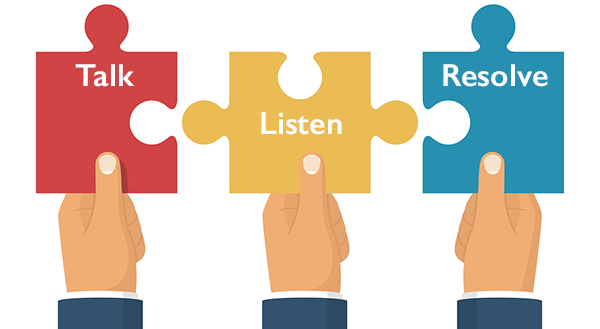What is Collaborative Divorce? A collaborative divorce occurs when the spouses are able to work out a divorce court agreement.
What Is Collaborative Divorce? Spouses divorcing must decide how to proceed and whether they will require support from attorneys, mediators, and other divorce professionals.
Some couples end up in a lengthy, high situation of conflict with lawyers representing both sides and trying to get everything they can get. While others may decide on how to divide property and share custody of their kids. You may just need assistance to file the legal paperwork to finalize the divorce. Many couples fall into the middle and will need a mediator’s support in finding a final settlement agreement.
Couples with conflicting views on issues such as division of property, child custody or spousal support can also go through a joint divorce by engaging a mediator to help resolve any conflicts. We all have a choice as to how our divorce will go about. Collaborative divorce is an advantage for all concerned and is not only used by those who fully agree on all issues.
How does the collaborative divorce process works? What is Collaborative Divorce?
The collaborative divorce process works with each party retaining an attorney of their own choosing (if they decide to do so). This is similar to the first step of a traditional divorce. An attorney for each party plays a similar role. The attorney’s presence is designed to ensure that the party’s rights are protected throughout the process. In addition, attorneys can provide the parties with important legal information throughout the collaborative divorce process regarding the consequences of any agreement to which the parties may come.
When each party meets with their respective attorneys, the parties should indicate whether they wish to resolve their issues through a collaborative divorce. Because this is a voluntary process (that is, no court or statute makes it necessary for a party to participate in a collaborative divorce against his or her will), a collaborative divorce can work only if both of the parties are agreeable and desire to enter into a collaborative divorce. A party can choose to enter the collaborative divorce process right away, to enter the process later after other issues have been resolved, or to not enter the process at all.
Assuming that both parties wish to use the collaborative divorce framework, there will be an initial meeting between the parties and their attorneys in order to create a collaborative divorce participation agreement. This agreement identifies the major issues the parties intend to resolve through the process as well as the major decisions that need to be made and establishes the “ground rules” for the process. The agreement will also identify the documents and evidence each party needs in order to negotiate in good faith. Finally, the parties will agree not to use the court system to litigate the issues of the agreement. If a party chooses to do so, the agreement states that the parties’ attorneys must withdraw from representing them and each party must get new attorneys.
The Advantages
- Both parties each have greater control over the outcome. You can voice your views freely.
- You agree to settle issues based on consensus and fair play. Rather than letting a judge make the final decisions that affect your life.
- It is less expensive than litigation. Attorney fees and court costs can add up quickly.
- The procedure takes less time than trial. This is because you have selected the time and place you meet. Instead of coping with complicated divorce court schedules.
- There’s far less stress and anxiety involved, because in the divorce you take a more active part.
- The goal is to reach a settlement before anybody files papers in divorce court. Once a couple accepts a settlement, then a legally binding agreement is written. The papers are filed in court for a judge’s approval once both parties have signed.
- You know that you have worked together to make everybody’s life easier. Especially for children.
Time and Cost to Complete the Collaborative Divorce Process
A collaborative divorce may take between eight and Fourteen months to complete. Typically, four to six group sessions can resolve these issues. These vary in length.
The pace of the process is measured not only by how rapidly all conflicts can be resolved but also by the ability to coordinate the schedules of each party and their counsel, the financial professional(s), the child specialist(s), the therapist(s), the dispute coach, etc.
Other factors are related to filing with the courts and obtaining a court date.
These route costs vary. It can range between $25,000 to $50,000 depending on several factors. The complexity of the case is a factor, and also the degree of coordination between the parties. The process involves several external factors.
If the collaborative process is unsuccessful and a case subsequently goes to trial, the cost of divorce can range from $78,000 to $200,000.

